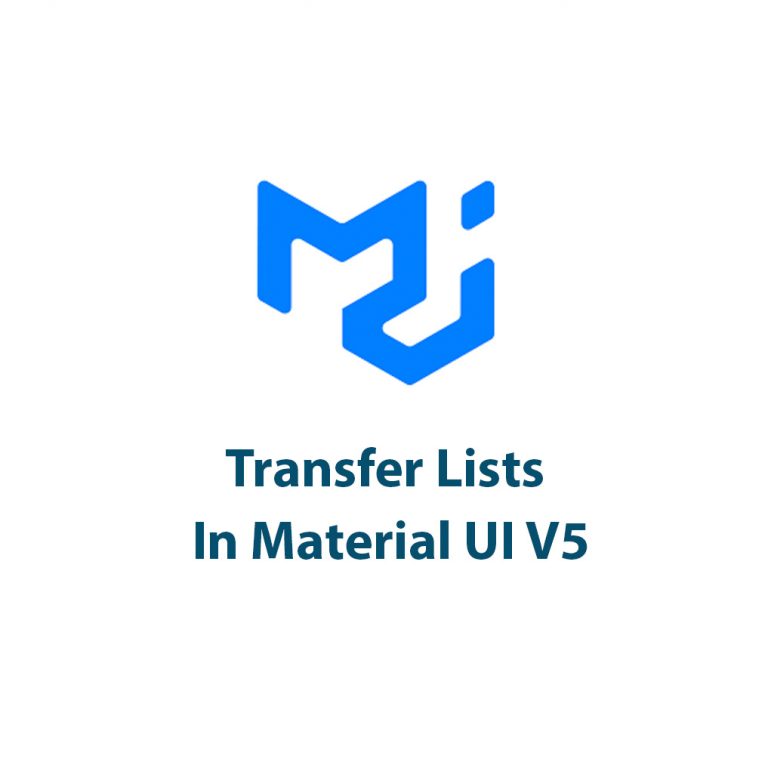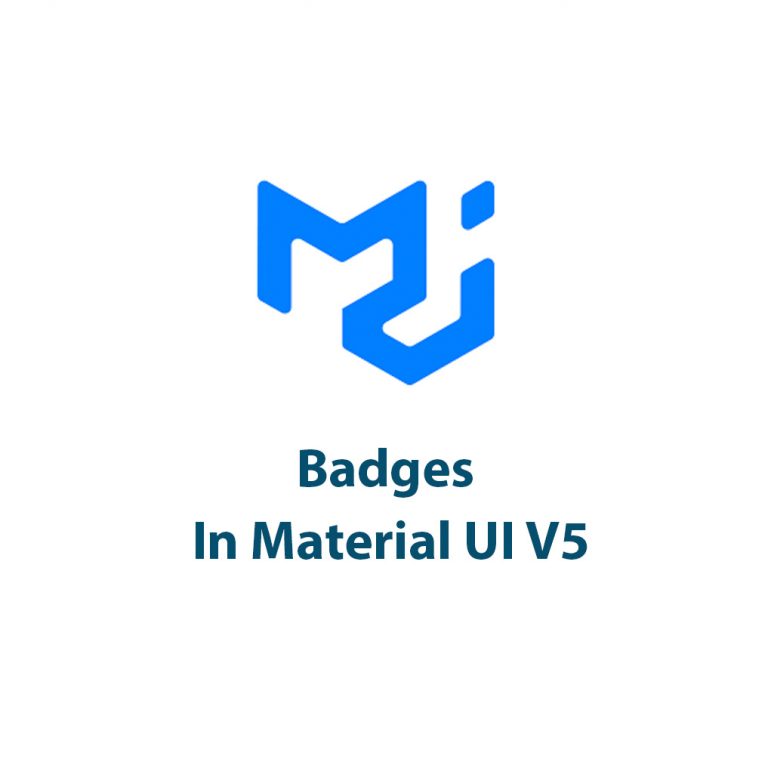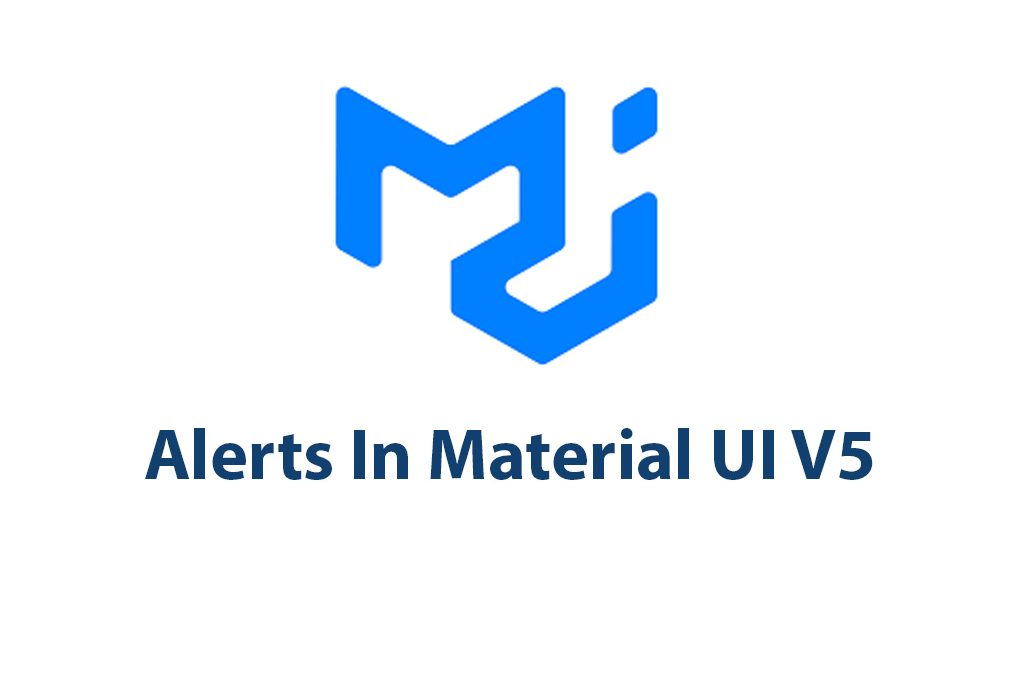Introduction
Let’s take a look at Alerts In Material UI V5. With its sleek design and easy-to-use features Material UI V5 makes it easy to show your users alerts.
Alerts are an essential element of any website or application, allowing us to provide users with important information and updates. In this article, we’re going to take a deep dive into Material UI V5 alerts, exploring the different types, customization options, and common use cases.
Material UI V5 Alerts
Material UI V5 offers four different types of alerts: success, warning, error, and info. Each alert type has its own unique style, making it easy to differentiate between different types of alerts.
One of the great things about Material UI V5 alerts is that they can be easily customized to fit the style of your website or application. For example, you can change the background color, text color, border radius, and more. To customize an alert, you simply need to pass a set of properties to the alert component.
import React from 'react';
import Alert from '@mui/material/Alert';
import Stack from '@mui/material/Stack';
export default function CustomizedAlerts() {
return (
<Stack sx={{ width: '100%' }} spacing={2}>
<Alert variant="filled" severity="success">
This is a success alert — check it out!
</Alert>
<Alert variant="filled" severity="warning">
This is a warning alert — check it out!
</Alert>
<Alert variant="filled" severity="error">
This is an error alert — check it out!
</Alert>
<Alert variant="filled" severity="info">
This is an info alert — check it out!
</Alert>
</Stack>
);
}In this code example, we’re importing the Alert and Stack components from Material UI. We’re then rendering four different alerts with different severity levels (success, warning, error, and info). The variant property is set to “filled”, which gives the alerts a solid filled background. We can also set variant to “outlined” which gives the alerts an outlined border.
We can further customize an alert by passing additional properties. For example, we can add an icon to the alert by setting the icon property:
<Alert
icon={<CheckCircleIcon sx={{ color: green[600] }} />}
severity="success"
>
This is a success alert — check it out!
</Alert>In this example, we’re adding the CheckCircleIcon component from Material UI as the icon for the success alert. We’re also setting the icon color to green.
Handling Alert State
When working with alerts, it’s important to handle the alert state. This involves managing when alerts are shown or hidden based on different events or user interactions.
In Material UI V5, we can use React hooks to manage the alert state. We can set up a variable to track the alert open state, and then use a useState hook to update the state when necessary.
import React, { useState } from 'react';
import Alert from '@mui/material/Alert';
export default function AlertExample() {
const [open, setOpen] = useState(true);
const handleClose = (event, reason) => {
if (reason === 'clickaway') {
return;
}
setOpen(false);
};
return (
<div>
{open && (
<Alert onClose={handleClose} severity="error">
This is an error alert — check it out!
</Alert>
)}
</div>
);
}In this code example, we’re using the useState hook to set the open variable to true by default. We’re also defining a handleClose function that updates the open state to false when the user clicks the close button on the alert.
Advanced Alert Customization
Material UI V5 alerts can be customized even further with more advanced techniques. For example, we can add icons to alerts using the Avatar component:
import React from 'react';
import Alert from '@mui/material/Alert';
import Avatar from '@mui/material/Avatar';
import Stack from '@mui/material/Stack';
import GradeIcon from '@mui/icons-material/Grade';
export default function AvatarAlerts() {
return (
<Stack sx={{ width: '100%' }} spacing={2}>
<Alert
action={
<Avatar
sx={{ bgcolor: '#3f51b5' }}
>
<GradeIcon />
</Avatar>
}
severity="success"
>
This is a success alert with an icon — check it out!
</Alert>
<Alert
action={
<Avatar
sx={{ bgcolor: '#f44336' }}
>
<ErrorIcon />
</Avatar>
}
severity="error"
>
This is an error alert with an icon — check it out!
</Alert>
</Stack>
);
}In this example, we’re importing the Avatar component from Material UI. We’re then rendering two different alerts with different severity levels (success, error) and a custom avatar icon for each.
We can also customize the alert theme to match the style of our website or application using the ThemeProvider component:
import React from 'react';
import Alert from '@mui/material/Alert';
import { createTheme, ThemeProvider } from '@mui/material/styles';
const theme = createTheme({
components: {
MuiAlert: {
styleOverrides: {
root: {
backgroundColor: '#f7dfc5'
},
message: {
color: '#6e2f00'
},
action: {
color: '#6e2f00'
}
}
}
}
});
export default function CustomizedAlerts() {
return (
<ThemeProvider theme={theme}>
<Alert severity="warning">
This is a warning alert with a custom theme — check it out!
</Alert>
</ThemeProvider>
);
}In this example, we’re creating a custom theme
using the createTheme function from Material UI. We’re then defining a custom theme for the MuiAlert component, which overrides the default style properties. In this case, we’re setting the background color to a light yellow, the message color to a dark brown, and the action color to the same dark brown.
Common Alert Use Cases
Now that we’ve explored the different types, customization options, and advanced techniques for Material UI V5 alerts, let’s take a look at some common use cases for alerts in web development.
Form Validation
Form validation is a common use case for alerts, as it allows users to see if they’ve made any mistakes or missed any required fields before submitting the form. Here’s an example of how we can use Material UI V5 alerts for form validation:
import React, { useState } from 'react';
import Alert from '@mui/material/Alert';
import Button from '@mui/material/Button';
import TextField from '@mui/material/TextField';
import Stack from '@mui/material/Stack';
export default function FormValidation() {
const [name, setName] = useState('');
const [email, setEmail] = useState('');
const [alert, setAlert] = useState(null);
const handleSubmit = (e) => {
e.preventDefault();
if (!name || !email) {
setAlert(
<Alert onClose={() => setAlert(null)} severity="error">
Please fill out all required fields.
</Alert>
);
return;
}
// Form submission logic here
};
return (
<>
{alert}
<form onSubmit={handleSubmit}>
<Stack direction="column" spacing={2}>
<TextField
label="Name"
variant="outlined"
required
value={name}
onChange={(e) => setName(e.target.value)}
/>
<TextField
label="Email"
variant="outlined"
required
value={email}
onChange={(e) => setEmail(e.target.value)}
/>
<Button type="submit" variant="contained">Submit</Button>
</Stack>
</form>
</>
);
}In this example, we’re using the useState hook to set up variables for the name and email form fields, as well as the alert state. We’re then defining a handleSubmit function that checks if the name and email fields are filled out. If not, we’re displaying an error alert using the Material UI V5 Alert component. If the fields are valid, we can perform the form submission logic.
User Feedback
Alerts can also be used to provide users with feedback on their actions, such as successfully creating a new account or logging in. Here’s an example of how we can use Material UI V5 alerts for user feedback:
import React, { useState } from 'react';
import Alert from '@mui/material/Alert';
import Button from '@mui/material/Button';
export default function UserFeedback() {
const [alert, setAlert] = useState(null);
const handleCreateAccount = () => {
// Logic to create new account
setAlert(
<Alert onClose={() => setAlert(null)} severity="success">
Your account has been successfully created!
</Alert>
);
};
return (
<>
{alert}
<Button variant="contained" onClick={handleCreateAccount}>Create Account</Button>
</>
);
}In this example, we’re using the useState hook to set up the alert state. We’re then defining a handleCreateAccount function that performs the logic to create a new account. Once the account is created, we’re displaying a success alert using the Material UI V5 Alert component.
Conclusion
Material UI V5 alerts offer a sleek, customizable, and easy-to-use solution for alerts in web development. With their different types, customization options, and advanced techniques, Material UI V5 alerts can handle a wide range of use cases, from form validation to user feedback. Whether you’re a seasoned developer or just starting out, Material UI V5 alerts are definitely worth exploring. With a burst of excitement, I urge you to try out Material UI V5 alerts in your own projects and incorporate them into your web development toolbox.

Button Groups In Material UI V5
Hey there! Welcome to my article all about button groups in Material UI V5. In this article, I’ll be giving you an in-depth insight into button groups, how they are used in UI designing, and how you can create them in Material UI V5. Introduction Before we dive into button groups, let’s start with some […]

Transfer Lists In Material UI V5
Introduction I remember the first time I stumbled upon transfer lists while working on a project. I was perplexed by the concept, but as I delved deeper, I realized the tremendous benefits of using transfer lists in web development. With the release of Material UI v5, the developers have made it even easier to incorporate […]
Icons In Material UI V5
Introduction: Material UI is a popular open-source framework for building web applications. Built on top of React, it provides a set of pre-built and customizable components, including typography, forms, and icons. In Material UI, icons play a crucial role in designing visually appealing interfaces and enabling smooth user experience. With the recent release of Material […]

Badges In Material UI V5
As a web developer, I’ve always been fascinated by the small design elements that can make a big impact on the overall user experience of a website. One such element is the badge, often used to highlight new or important information to users. In the latest release of Material UI, version 5, badges have seen […]

Radio Groups In Material UI V5
Introduction Hello everyone! Material UI has long been one of my favorite UI libraries, and with the recent release of version 5, I thought it would be a great time to explore one of its fundamental components: Radio Groups. In this article, we’ll dive into what Radio Groups are, how they can be used in […]

Typography In Material UI V5: A Closer Look
Introduction As a designer and developer, I’ve always been obsessed with typography. There’s something special about the way certain fonts look on a page or screen that can make or break the overall success of a design. As Material UI continues to evolve and improve, the latest version, Material UI V5, offers some exciting changes […]

